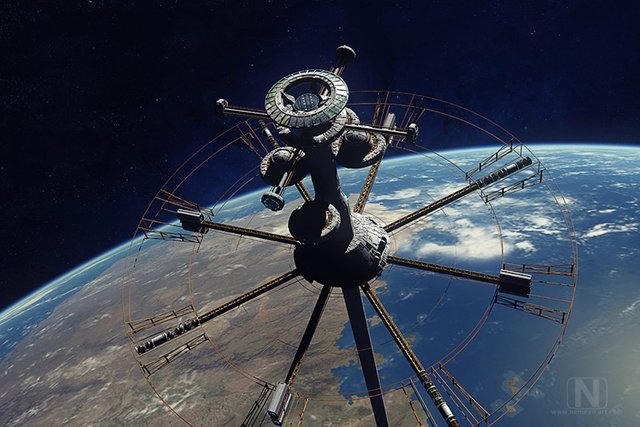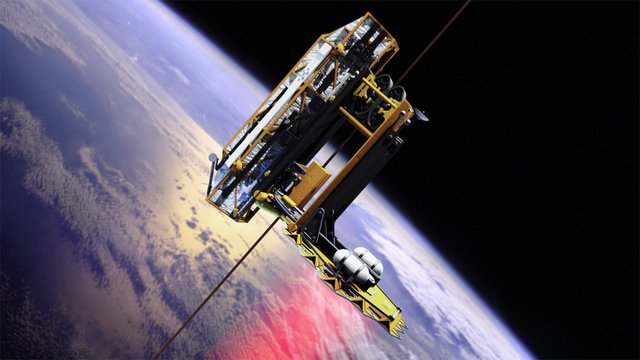Going Up. An Elevator to Space.

When it comes to dramatically increasing the amount of space exploration that can be done, one of the most challenging things is the amount of energy it takes to escape the earth's gravity. In order to escape the earth, a rocket needs to carry a tremendous amount of fuel. In fact the majority of the rocket's weight is fuel, which of course leaves very little weight that can be carried as payload. Add to that all the mechanical parts whose purpose is to contain and burn the fuel and you have the situation where almost all the energy of a rocket is used to lift the fuel and it's associated technology. Only 4% of the weight of the Saturn V rocket, which was the workhorse of the Apollo program, was payload. For the reusable Space Shuttles, the payload was only 1% of the overall weight.
Using rocket technology to escape the earth makes it very difficult to scale up the amount of exploration we can do. It takes a long time and a lot of money to make such fuel heavy rockets, so that a rocket launch can only be done infrequently. But what if things could be brought into space without rockets burning all that fuel? One of the most unusual and yet most likely technologies that may do this soon is the space elevator.

As crazy as it may sound, NASA and many private high tech companies are spending a substantial amount on the design and research for space elevators. The International Academy of Astronautics thinks the first one can be built by 2035. There are definite hurdles, such as developing some new high tech materials and international cooperation, but in principle it can be done. The most promising high tech material is carbon nanotubes, which exist today and could further be developed to make a space elevator with a supporting structure that is strong and not very thick.

One of the biggest motivations behind the idea of the space elevator is how much cheaper it would be to send things into orbit, and beyond. To put something into orbit around the earth it currently costs about $20,000 per kilogram. With a space elevator, the cost could be as low as $500 per kilogram. This drastic reduction in cost would usher in a whole new era of space exploration. A space elevator could go just past geosynchronous orbit and attach to a platform from which space vehicles could launch, requiring far less fuel since they won't need to escape earth's gravity.
If you really want to dig deeply into this are of research, check out the National Space Society's online Space Elevator Library. Here is the link
http://www.nss.org:8080/resources/library/spaceelevator/index.htm
I read about this concept several years ago and thought it was an interesting idea. Then, I didn't really see anything about it...until now. Good to know that somebody is still researching it, especially in the private sector. I hope they figure it out. It would open up so many more possibilities for space exploration.